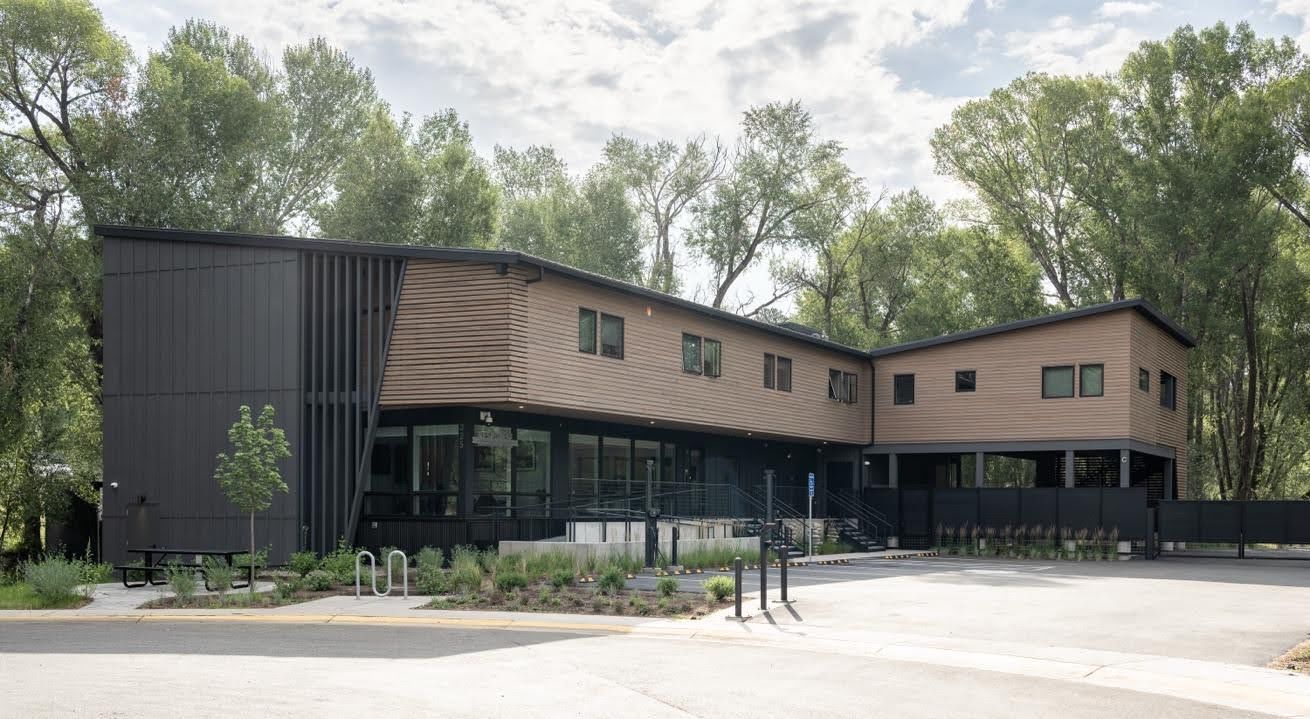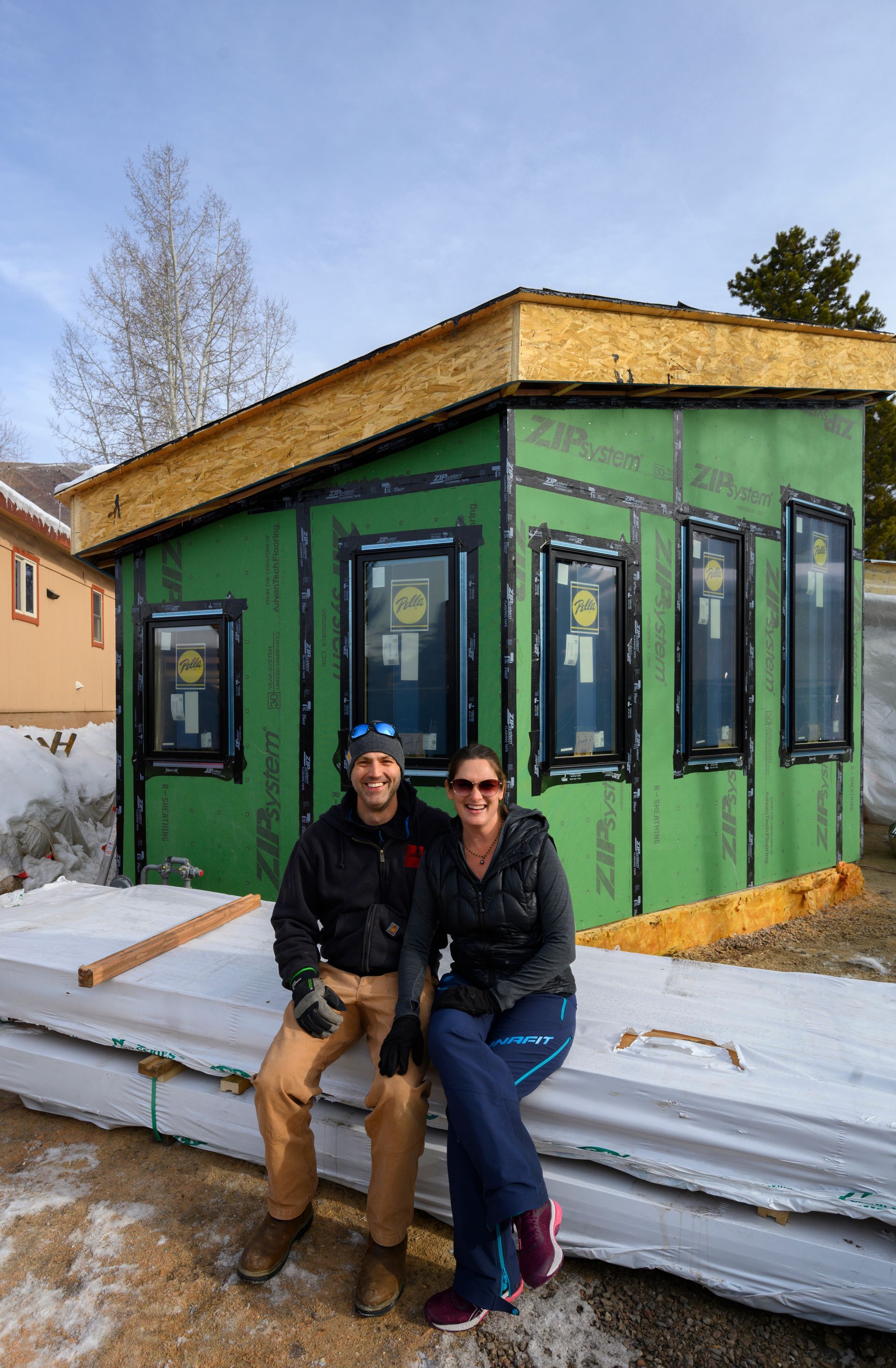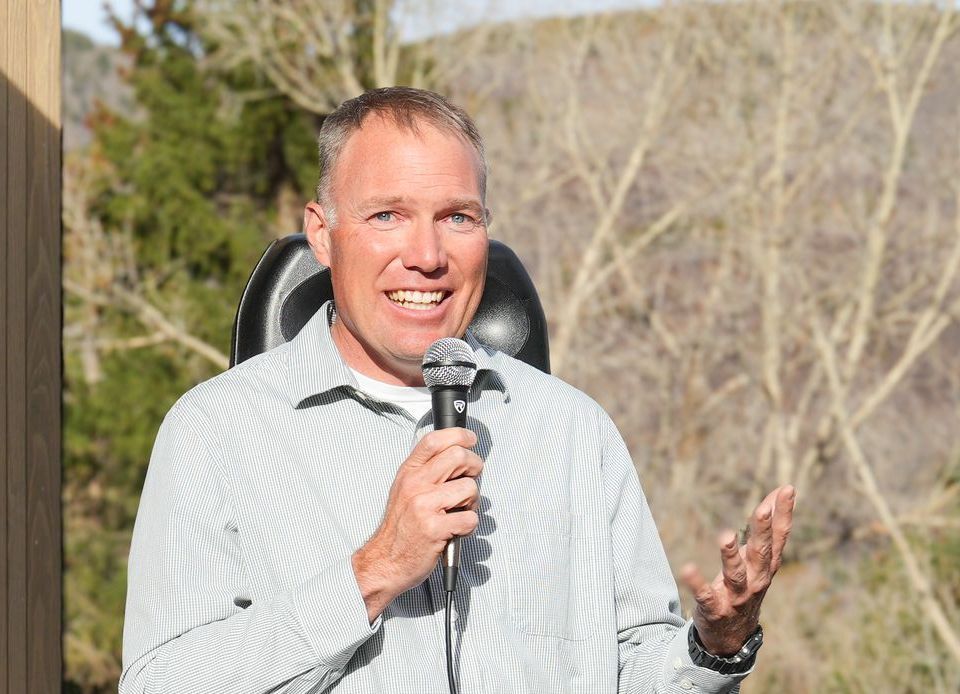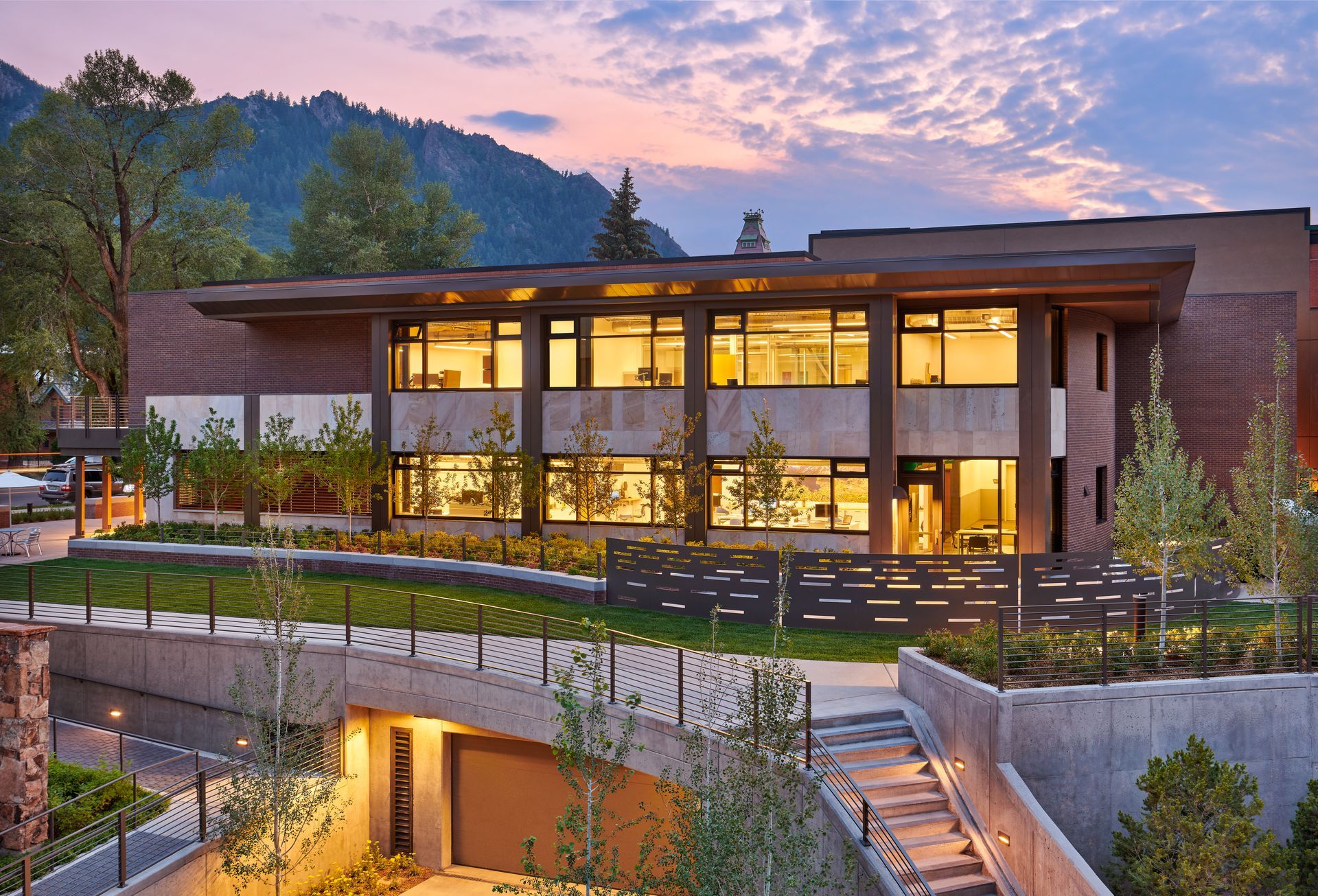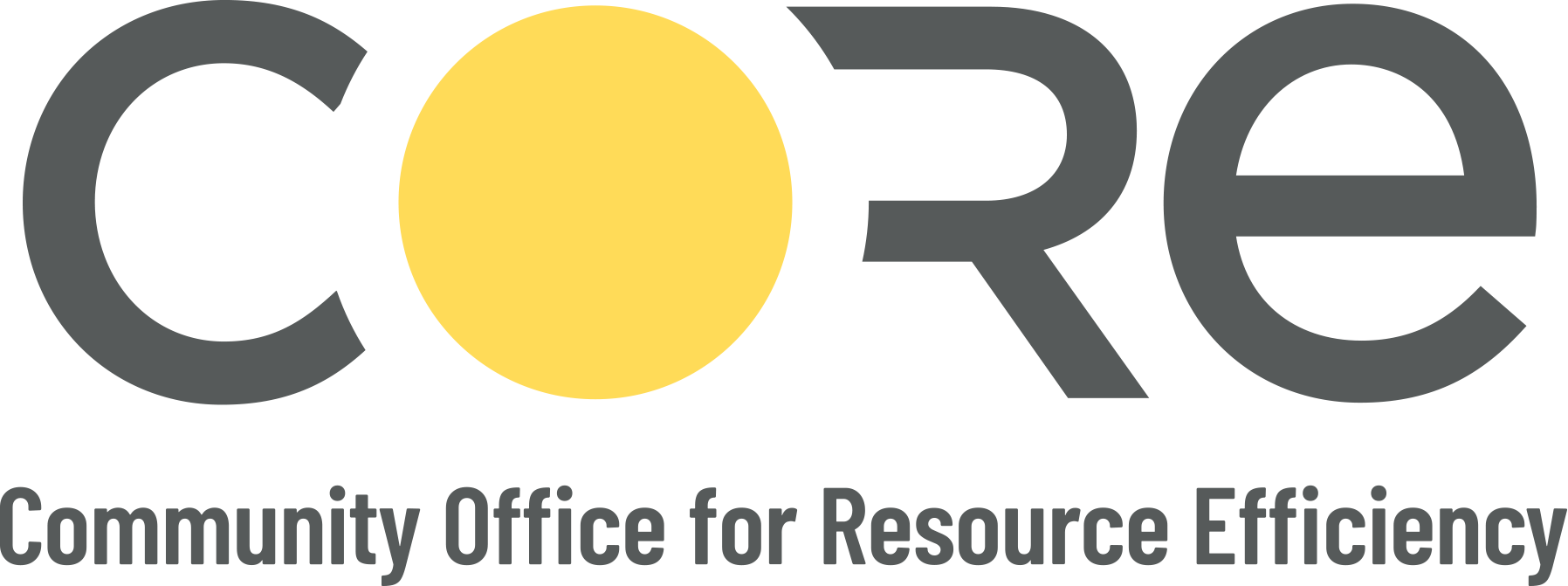Lessons in Layering
Originally published: September 2023
Updated: January 22, 2025
Tighten Your Building Envelope
Living in the Roaring Fork Valley means adapting to an ever-changing mountain climate. Outdoor enthusiasts will tell you that the right combination of base, middle, and outer layers is the secret to staying cozy, safe, and energized in varying conditions.
The same goes for your home, office, or other building type. Just as a wool shirt, puffy jacket, and rain shell can regulate your body temperature, the proper combination of layers can shield your building from wasting energy, which can cause high utility bills and discomfort to the occupant.
This system of layers is known as the "building envelope."

The Building Envelope - From the Inside, Out
At its core, a building envelope is a set of layers that protects and separates what’s inside of a building from what’s outside of a building. The envelope includes a building’s foundation, walls, windows, doors, and roof.
The three main functions of a building envelope are to provide the building with structure, climate control, and aesthetics:
- Structure: The structure of a building is what keeps it sturdy, like the frame, roof, and foundation.
- Climate Control: Keeping elements like air and water where they belong - outside, inside, or somewhere in between - is important for your building to function efficiently and effectively.
- Aesthetics: Visual elements, like siding, drywall, and paint, give your building its character and charm.
Being at high elevation, our summers are sunny and dry, our winters are freezing and snowy, and over the year,
temperatures can vary from -20°F to 90°F. In these unique climate conditions, mastering your building envelope equation could result in up to 15% in energy savings. In other climate zones, energy savings could add up to 30% or more.
The Building Envelope Equation
By combining the basic elements of a building envelope with materials like insulation, weatherstripping, and caulk, you can ensure that your system will work together seamlessly to create an ideal building environment.
Below are our recommendations and a legend for achieving substantial energy savings alongside weighing the potential costs you might undergo when doing your building envelope improvement project.
Legend
💸 - 💸💸💸💸 = Potential Costs
⚡ - ⚡⚡⚡⚡ = Potential Energy Savings
1. Get an Energy Assessment. CORE provides free energy assessments for Community Priority Participants, business walk-throughs and subsidized home energy assessments for $100 (a $600 value) that are conducted by professional energy advisors.
A home energy assessment includes:
a. A blower door test to detect energy leaks.
b. Detection of carbon monoxide and gas leaks.
c. Free, quick-fix installs such as LED lights, hot water pipe wrap, and water heater blanket, as well as a comprehensive report outlining your home’s inefficiencies and opportunities for improvement.
2. Select Improvement Project(s). There are a range of options to choose from, each with its own level of investment and potential for energy savings and financial support.
The
Environmental Protection Agency (EPA) offers these suggestions on insulation and weatherization projects as they relate to costs and energy savings:
Attics (💸💸💸💸, ⚡⚡⚡⚡) - While insulating and sealing the holes in your attic may not be the simplest of projects, the potential energy savings are substantial. Insulation serves as a thermal barrier, keeping heat in your home when you want to keep it warm and allowing the cool air in when trying to keep temperatures lower.
Insulated attics also play an important role in preventing ice dams. Ice dams are ridges of ice that form along the eaves of a roof and can cause significant damage to buildings. They form when snow on the roof melts due to uninsulated attics, flows down to the eaves, and refreezes.
Basements & Crawlspaces (💸💸💸, ⚡⚡⚡) - Similar to attic insulation, insulating and sealing your basement or crawlspace helps regulate floor temperature, creating a welcoming terrain for your feet in the winter. Controlled temperatures also protect the structural integrity of your home by preventing the warping of wooden beams and deterioration of concrete foundations.
Additionally, a properly sealed building creates a barrier against unwanted elements and pests, keeping your building rodent-free and preventing water from getting trapped in your building and forming mold.
Ducts (💸💸💸, ⚡⚡) - Ducts in your building are the tunnels that link your heating and cooling system together, including the vents that release heated or cooled air. Duct systems can also maintain indoor air quality.
Well-insulated and maintained ductwork leads to energy savings. If your ducts leak and lack insulation, valuable conditioned air can escape before reaching its intended destination. When air is distributed efficiently and evenly throughout a building, it ensures that each room receives the correct amount of air.
Leaky ducts also have to work harder. Sealed ducts experience less wear and tear, potentially expanding their lifespans.
Windows, Doors, Walls, & Fireplaces (💸💸💸, ⚡⚡) - When it comes to maximizing energy savings, addressing gaps in drafty areas like doors, windows, walls, and fireplaces may not yield the most significant impact. Still, it's often the most accessible starting point for building owners to tackle on their own.
Weather stripping and caulking can reduce drafts in a few simple steps. Taking it a step further, you can upgrade your insulation to modern, sustainable standards that ensure good airflow and moisture control. Not only will this boost energy efficiency, but it will also create a quieter, more comfortable environment. If you have a wood-burning fireplace, make sure it’s clean, properly maintained, and has air prevention systems in place when it’s not in use.
3. Plan Your Project. Once you’ve pinpointed your energy efficiency priorities, it’s time to map out your project. CORE
partners with property owners, architects, and construction experts throughout a project’s development process to guarantee that energy-saving projects are successful without breaking the bank.
If you’re seeking guidance to plan your project, check out our listing of
contractors in the area or call our
Energy Concierge team, and they’ll help you achieve your goals.
4. Get Funded. There are multiple resources available to help you fund your project, including federal, state, and regional funding.
Up to $1,200 is available in tax credits through the federal
Inflation Reduction Act (IRA).
CORE, specifically,
offers up to $200,000 in grants and rebates for energy-saving projects. Projects must be in Pitkin, Eagle, or Garfield Counties.
Conclusion
Similar to mastering clothing layers for mountain weather, finding the right combination of layers for your building is a system of fine-tuning.
Achieving significant energy savings hinges on the effectiveness of the building envelope. By following our recommended formula and exploring available funding options, you can maximize comfort, sustainability, and cost savings.
Contact
CORE to learn more about our funding as well as other resources that can help you reach your project goals.
This content is proudly included in the Randy Udall Memorial Educational Program, advancing energy education and climate action


